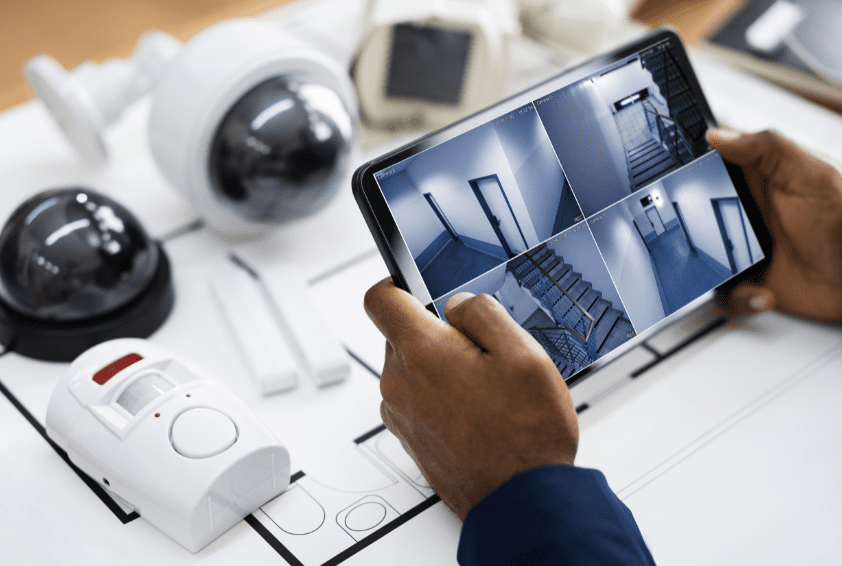Simplified guide to CCTV (Closed-Circuit Television) installation:
1.Pre-Installation Planning:
- Determine Coverage: Identify key areas you want to monitor.
- Camera Selection: Choose the right type of cameras for your needs (e.g., dome, bullet, PTZ, indoor/outdoor, night vision capability).
- Recording and Storage: Decide on a DVR (Digital Video Recorder) or NVR (Network Video Recorder) for storing footage, along with sufficient storage capacity.
- Networking Requirements: For remote viewing, ensure you have a stable network setup.
Installation Process:
- Mounting Cameras:
– Select high, broad-angle positions.
– Install mounts securely, protecting against elements if outdoors.
– Point cameras away from direct sunlight and backlight.
- Laying Cables:
– Run video and power cables from each camera to the DVR/NVR; use conduits as needed.
– Keep cables away from electrical lines to avoid interference.
– Secure cables with clips to keep them in place and protected.
- Powering Cameras:
– Use a power drill to make any holes needed for mounting brackets and running cables.
– Connect cameras to power either individually or using a power supply box for multiple cameras.
- Connecting to the DVR/NVR:
– Plug video cables into the DVR/NVR.
– Securely screw in or plug in connections.
– Connect the DVR/NVR to a power supply.
- Networking and Configuration:
– Connect the DVR/NVR to a router or switch for network access.
– Use Ethernet cables for a wired network connection.
- Setup and Testing:
– Configure the DVR/NVR according to the manufacturer’s instructions.
– Adjust camera angles and focus as needed.
– Test the system, recording functions, and live view.
– Check remote viewing capability if applicable.
Post-Installation:
- Secure your network to prevent unauthorized access to your CCTV system.
- Train the users on how to operate the system, review footage, and save video clips.
- Regular Maintenance: Clean camera lenses, check power supplies, and ensure that recording is functioning properly.
Considerations:
– Legal Requirements: Check your local laws regarding privacy and surveillance.
– Quality: Higher resolution cameras offer better detail.
– IR Cut Filter: To ensure accurate color reproduction during the day and enhanced night vision.

